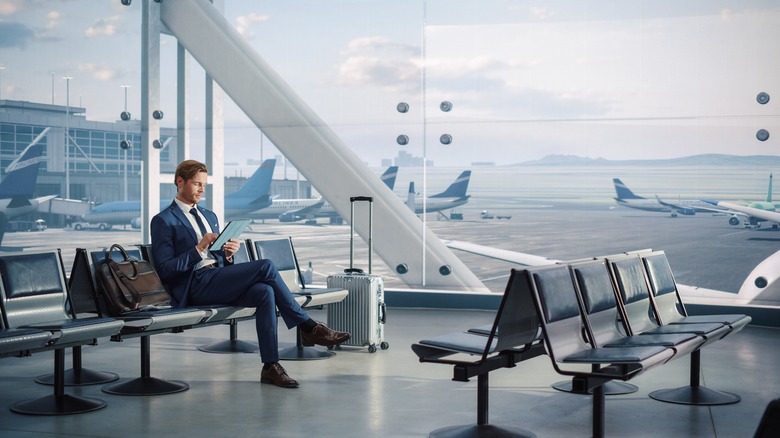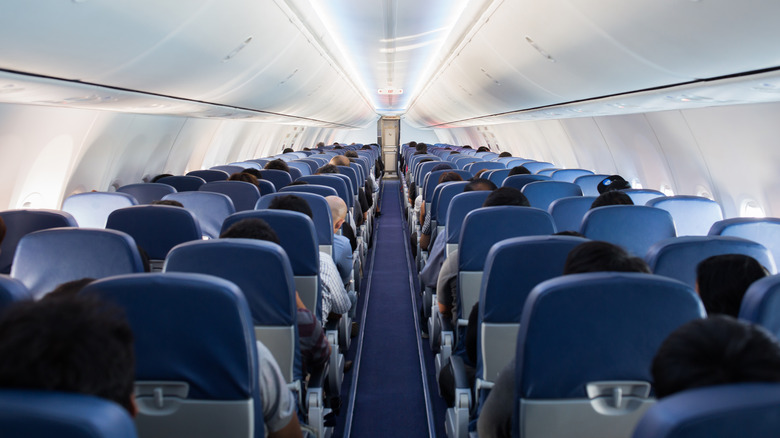
Gorodenkoff/Shutterstock
By C. Gordon/
When booking a flight, the chief concerns are typically finding a seat that isn’t the middle one, what kinds of tiny snacks will be served, and how long it’ll take to actually get there and wait another half hour to get off the plane. We don’t often think to check what kind of plane we’ll be flying, and just try to make sure we’re only taking one or two flights to get there. But finding out the type of plane you’ll be preboarding can be a helpful tool when booking.
Why would one be interested in the type of plane? Different models of aircraft have different seat configurations, variable leg room, and more. Smaller, regional planes, for example, tend to have more limited carry-on space; that bag you know is the right size might still have to be checked if your undersized aircraft reaches capacity. Finding a similar flight with a larger plane could help avoid these concerns, and save you from standing at the luggage carousel waiting for a bag that could have slid beneath the seat of a more capacious craft.
Knowing a plane’s make and model also reveals the safety history of that type of plane, particularly if it was grounded in recent years. Per PhocusWire, the travel booking site Kayak saw a 15-fold uptick in users filtering by airplane model, particularly avoiding Boeing 737-8 Max and Boeing 737-9 Max planes, after the infamous Alaska Airlines incident in January 2024.
How to find the aircraft model

CatwalkPhotos/Shutterstock
The process isn’t nearly as complex as one might think. When booking a flight, it’s commonplace for airlines to list the type of plane being used in the flight details information on the reservation page. If it happens to not be there, head to a travel search engine like Google Flights or SeatGuru, and once you plug in the flight details, it will list the precise model of aircraft for each segment of the flight, as well as other useful details like carry-on capacity, flight amenities, and information regarding children, among other features.
The seat configurations may help in understanding just how comfortable a flight may be, and such details can easily be overlooked during the often tense booking process. At SeatGuru, for instance, a potentially useful feature even lists some of the best seats and worst seats as rated by users, with little reviews on the side. Writing a review for plane seats may seem hyper-specific, but can be more than useful when you have a long, upcoming cross-country flight. The best seats are rated green, the worst are rated red, and some are green and yellow, because they apparently received mixed reviews, like a movie. Best to use your instincts in that situation.